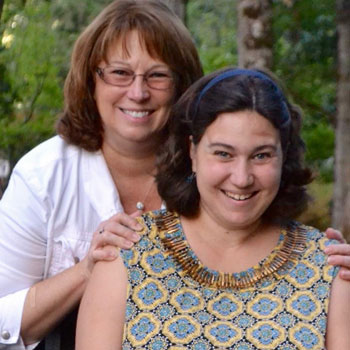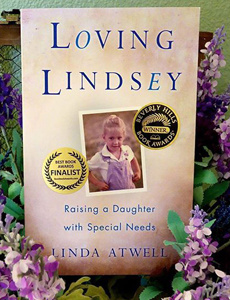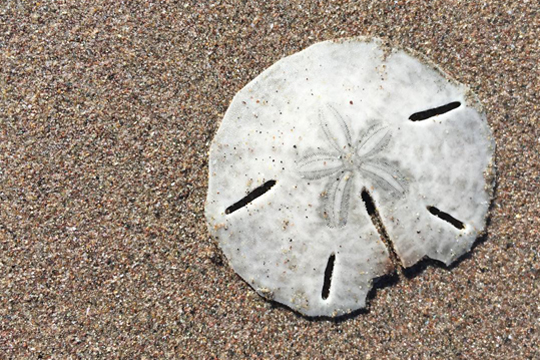In 2001 on my daughter’s 21st birthday, despite our strained relationship, I offered to drive Lindsey the three-plus hours from the Willamette Valley, over the Pacific Coast Range, to celebrate this milestone on the Oregon coast.
“It’s my favorite place on earth,” Lindsey said, jumping up and down, clapping her hands. It was the exact response I’d hoped for. In those days, the opportunity to spend any time with my daughter was rare. As soon as she said yes, my mind began to plan our day. First, I’d take her to the Lincoln City Outlet Mall and let her pick out a few new outfits. We’d have lunch at Arctic Circle—her restaurant of choice. She’d ask for a cheeseburger, fries, and a chocolate shake with extra chocolate syrup. Of course, I’d buy her whatever she wanted—just to see her smile. Finally, as the May sun began to dip low in the sky, we’d linger on the seashore, watching the big orange ball disappear below the horizon.
 On my daughter’s special day, our outing went according to plan. At the end of the afternoon, I pulled into the parking lot next to the beach and we started our stroll.
On my daughter’s special day, our outing went according to plan. At the end of the afternoon, I pulled into the parking lot next to the beach and we started our stroll.
The waves pounded against the shore. We tried chatting, but the wind carried our words away. I leaned toward Lindsey and reached for my girl’s hand. Her slender fingers felt warm against my palm. We walked in silence for a while, then Lindsey let go of my hand, bent down, and picked up a sand dollar.
A year before this day, Lindsey had been working part-time for Goodwill. My husband and I had eagerly helped her move into a county-subsidized, one-bedroom apartment less than one mile from our home. Her dream (our dream, too) had finally come true. She was living on her own and contributing positively to society. Yet, in our minds, allowing Lindsey these simple strides toward adulthood didn’t mean we’d relinquish all control over her life. Yes, we encouraged her independence, but we believed Lindsey had understood she could experience independence “to a certain extent.” Because of her challenges, we expected to be an ongoing, active influence her life.
As far as I could tell, Lindsey had been born typical. She rolled over, crawled, walked, talked—even potty trained on time. But at sixteen months, my toddler suffered a grand mal seizure. Afterwards, we noticed tremors in her hands, arms, and head. Eventually doctors at Oregon Health Science University diagnosed Lindsey as mildly mentally challenged. They explained the short in her neurological system would prevent her from processing information the same as her peers. They said—as an adult—Lindsey would likely live in a group home. Years later, a psychologist warned that our girl had a propensity toward poor social judgments.
To us, that warning, as well as the earlier diagnosis seemed off. As a young adult, our daughter was working and living on her own. In fact, Lindsey was exceeding the OHSU doctor’s predictions—and we were ecstatic.
Yet after only one month of living in her apartment, Lindsey secretly agreed to quit her Goodwill job and move into the home of a man more than twice her age. Tinfoil was taped over his windows. They rarely answered the door when we stopped by. And to make the situation even more sinister, this man discouraged our daughter from visiting us or attending family celebrations. We sought assistance from our local police department, her caseworker, our attorney. All explained that once she turned eighteen, Lindsey could choose to live wherever, and with whomever she wanted.
“It’s not illegal to pick a bad partner,” they told us over and over again.
We pushed back. “We’ll force her into our car and drive off….even if we have to take her kicking and screaming!” I told a police officer.
“If you do, and she objects, your daughter could have you arrested for kidnapping,” he said.
Kidnapping our own daughter? I didn’t understand. “She has developmental delays,” I explained, exasperated. “She has special needs.”
But as I said those words to the policeman, I worried. Even if we were able to force Lindsey home, how would we make her stay? My husband and I both worked full-time. We couldn’t watch her 24/7. Nor could we lock her in a room. While we were working, Lindsey might climb into this man’s car (or some other man’s) and drive away. We could lose her forever. We didn’t like this situation one bit, but according to the legal system, we had little power to change it. We told Lindsey repeatedly, “When you’re ready, just call us. We’ll come and get you. We love you.”
As Lindsey and I stood on the Oregon coast, the May winds whipped our hair. Lindsey’s smile stretched from one side of her face to the other as her hand grasped the sandy, light grey disk. She extended her shaking arm in my direction. The granules fell off the sand dollar and exposed five tiny slits—and in the center—a delicate star-like design. I peered at the fragile treasure and immediately noticed the edge was chipped.
“Let’s keep looking,” I shouted. “We can find a perfect one.”
Lindsey lifted the disk closer to her face and studied the shell. Her eyes darted right, then left, as if she were searching her head for the right words, the correct response.
“I like this one,” she shouted back, slipping the shell into the front pocket of her jeans. “I’m going to save it for forever. It’ll always remind me of the day I turned twenty-one.”
I didn’t want my daughter to have a broken shell. I wanted to find one without an imperfection, one that she could be proud to save, to share, to remember her special birthday. My eyes searched the beach for a picture-perfect shell. However, every one I suggested, Lindsey shook her head, refusing to give up the one she’d already slipped into her pocket.
As we walked back to the Camry, my mind fixated on the broken sand dollar hidden in my daughter’s pocket. I would’ve kept looking, I thought. I would’ve thrown it back into the ocean. I studied Lindsey’s innocent face. My thoughts paused, and a new soundtrack entered my head. I understood that our mother/daughter relationship was challenging…even broken. And yes, if I were honest, there were moments I felt my daughter was broken too. After all, if it weren’t for that dang short in her neurological system, Lindsey might see through her partner’s charades. She might see how damaging his tactics were, that a man who truly cared for her would not isolate a daughter from her mother, father, and extended family. Maybe there are reasons that shell spoke to Lindsey, I thought.
It would be three and a half more years before my daughter would decide to come home. On the day she walked into our guest room, she reached into her pant pocket.
“I told you I was gonna save it,” Lindsey said, placing the broken sand dollar on the dresser in our guest room.
That shell had been tossed upon the shore by the force of Oregon’s powerful waves….and survived. Lindsey had been roughed up in her own kind of swells, and yet she also survived. From a spiritual point of view, a few of the things sand dollars are suggested to represent are bravery, internal strength, and transformation. Lindsey had found beauty and value in that broken seashell and decided to keep it in spite of its missing part.
 Thirteen years have passed since that day. Lindsey once again lives successfully in our small Willamette Valley community. She has her own apartment and works a different part-time job—this time for a local insurance agent’s office where she files paperwork in a back room. She tells anyone who asks, “I work full-time two hours a day.” She has adopted two rescue kittens that she’s named Cuddles and Sally and treats them as if they were her children. She also receives support from two providers who help her shop, cook, and run errands—all of which help her to live the kind of life that is important to her—an independent one (to a certain extent). And our mother/daughter relationship is better, too.
Thirteen years have passed since that day. Lindsey once again lives successfully in our small Willamette Valley community. She has her own apartment and works a different part-time job—this time for a local insurance agent’s office where she files paperwork in a back room. She tells anyone who asks, “I work full-time two hours a day.” She has adopted two rescue kittens that she’s named Cuddles and Sally and treats them as if they were her children. She also receives support from two providers who help her shop, cook, and run errands—all of which help her to live the kind of life that is important to her—an independent one (to a certain extent). And our mother/daughter relationship is better, too.
Recently while walking along a beach in Mexico, reflecting on how far my daughter has come and how well she is doing, I came across a tiny sand dollar. I bent over, picked it up, and dusted the wet granules from the shell with my fingertips to find a small chip. My first instinct was to toss the gray disk back into the ocean. But I hesitated. My mind somersaulted back to my girl’s 21st birthday. I debated for a couple seconds, then slipped the broken sand dollar into my pocket and walked on.

The above story is a more in-depth look at a moment-in-time from the award-winning book, Loving Lindsey: Raising a Daughter with Special Needs. To learn more, click here.

